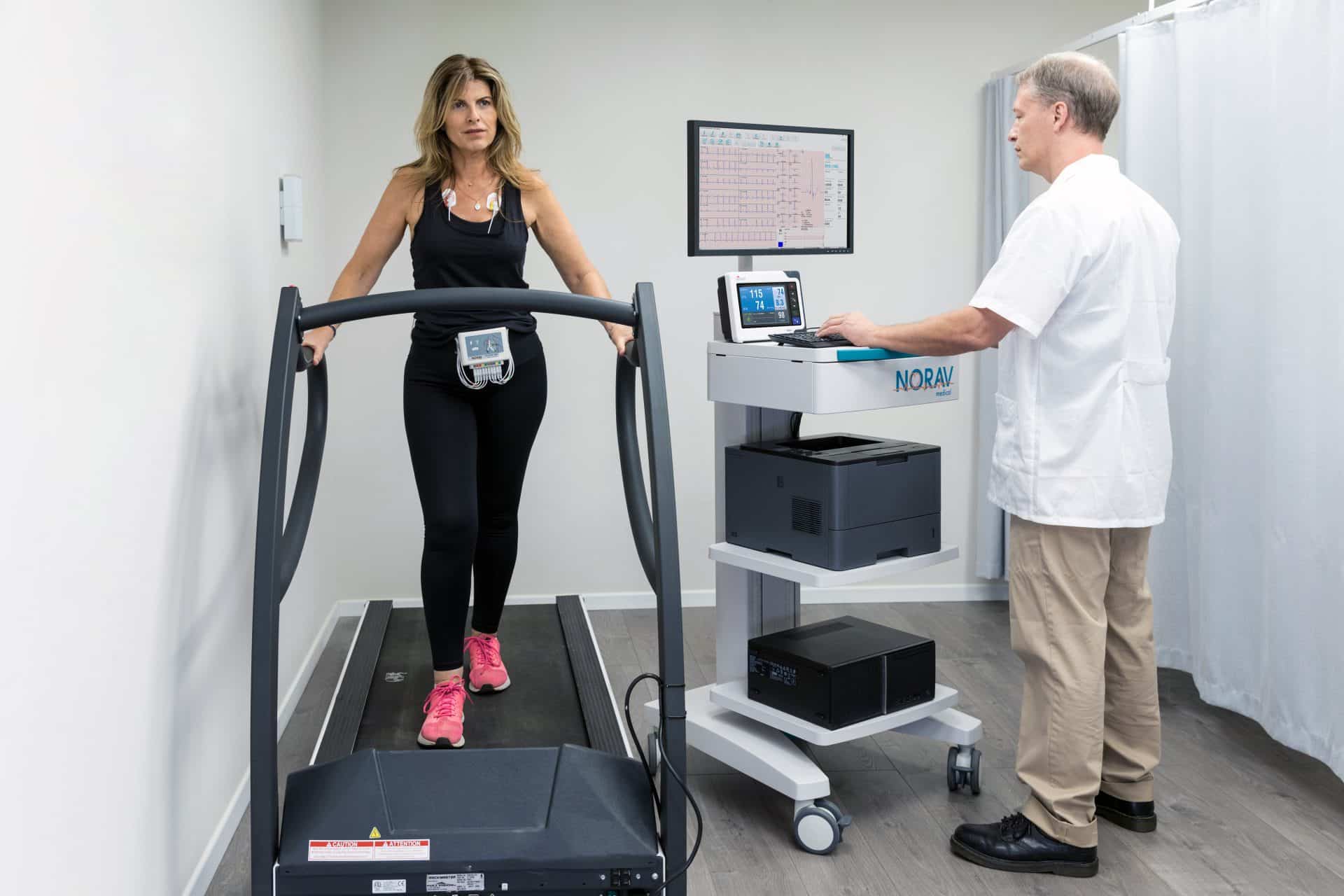Indications for Stress ECG: When and Why It’s Used

The Stress Electrocardiogram (Stress ECG), also known as the exercise ECG or treadmill test, is a widely utilized non-invasive diagnostic tool in cardiology. It helps assess cardiac function and detect a range of medical conditions. This article explores the medical conditions and situations that warrant a stress ECG, highlighting its significance in assessing coronary artery disease, evaluating exercise capacity, and monitoring specific medical treatments.
Indications for Stress ECG
1. Assessment of Coronary Artery Disease (CAD)
One of the primary indications for a stress ECG is the assessment of coronary artery disease, a condition characterized by the narrowing or blockage of coronary arteries that supply blood to the heart muscle. Stress ECG is valuable in several CAD-related scenarios:
a. Diagnosis of CAD: Stress ECG is used to diagnose CAD when patients exhibit symptoms such as chest pain (angina) during physical activity. The test helps detect exercise-induced changes in the ECG pattern, such as ST-segment depression, which are indicative of myocardial ischemia. This information aids in confirming the presence of CAD.
b. Risk Stratification: Patients with known CAD can undergo stress ECG to assess the severity of their condition and risk of future cardiac events. The test helps identify high-risk individuals who may benefit from more aggressive management or intervention.
c. Post-Infarction Evaluation: After a heart attack (myocardial infarction), stress ECG is employed to evaluate the extent of myocardial damage and identify regions at risk for ischemia. This information guides treatment decisions, such as revascularization procedures.
2. Evaluation of Exercise Capacity
Stress ECG is utilized to assess an individual’s exercise capacity and tolerance. This assessment is valuable in various clinical scenarios:
a. Functional Capacity: Stress ECG helps determine a patient’s functional capacity and exercise tolerance. This information is crucial for guiding cardiac rehabilitation programs and assessing overall fitness.
b. Risk Stratification for Surgery: In patients scheduled for non-cardiac surgery, stress ECG can be used to assess exercise capacity and predict perioperative cardiac risk. It aids in making informed decisions about surgical procedures and anesthesia.
c. Fitness Assessment: Stress ECG is used in sports medicine to evaluate athletes’ cardiovascular fitness and identify any exercise-induced arrhythmias or abnormalities. It ensures that athletes can safely participate in competitive sports.
3. Monitoring Medical Treatments
Stress ECG plays a role in monitoring the effectiveness of specific medical treatments, particularly in the following situations:
a. Anti-Arrhythmic Medication Assessment: Patients with arrhythmias may undergo stress ECG to assess the efficacy of anti-arrhythmic medications. The test helps determine if the medication controls or exacerbates arrhythmias during exercise.
b. Pharmacological Stress Testing: In cases where exercise stress is contraindicated due to physical limitations, pharmacological stress ECG may be employed to simulate the effects of exercise on the heart. This can be used to assess the response to medications, such as vasodilators and inotropes, in patients with known or suspected CAD.
4. Monitoring Symptomatic Patients
Stress ECG is often used to evaluate patients who experience symptoms that suggest cardiac involvement, particularly chest pain, shortness of breath, and other symptoms, such as palpitations, that occur during exercise or exertion. This aids in identifying the underlying cause of these symptoms:
a. Angina Assessment: For patients with suspected angina (chest pain due to reduced blood flow to the heart muscle), stress ECG is a valuable tool to diagnose the condition. The appearance of characteristic ECG changes during exercise supports the diagnosis.
b. Unexplained Dyspnea: Stress ECG can help determine if exercise-induced symptoms of shortness of breath are cardiac in origin. This differentiation is crucial for accurate diagnosis and treatment.
c. Evaluation of Syncope: In cases of unexplained fainting (syncope) during exercise, stress ECG can be used to assess for exercise-induced arrhythmias or other cardiac abnormalities as potential causes.
5. Risk Assessment in Asymptomatic Patients
In some instances, stress ECG is utilized for risk assessment in asymptomatic patients at risk of CAD:
a. Screening for CAD: Stress ECG can be used to screen asymptomatic individuals at risk for CAD due to factors such as family history, diabetes, or other risk factors. A positive stress test may prompt further evaluation and intervention.
b. Preventive Cardiology: Stress ECG helps identify individuals at high risk of future cardiac events. These patients can benefit from preventive measures like lifestyle modifications or medications.
6. Evaluation of Specific Populations
Stress ECG is employed in specific populations to address unique diagnostic or management considerations:
a. Pediatric Cardiology: In pediatric cardiology, stress ECG can help assess cardiac function in children with congenital heart diseases, exercise-induced symptoms, or arrhythmias.
b. Pregnancy: In pregnant individuals with suspected heart conditions or risk factors for CAD, stress ECG may be used to assess cardiac function and determine exercise safety during pregnancy.
Contraindications and Precautions
While stress ECG is a valuable diagnostic tool, there are specific contraindications and precautions to consider:
Absolute Contraindications:
– Acute myocardial infarction (heart attack)
– Unstable angina
– Severe aortic stenosis
– Uncontrolled heart failure
Relative Contraindications:
– Severe hypertension
– Significant arrhythmias
– Active infections or fever
In cases of relative contraindications, the decision to perform a stress ECG should be made after careful evaluation and consideration of the potential risks and benefits.
Connecting the Dots
The Stress Electrocardiogram is a versatile tool used to assess coronary artery disease, evaluate exercise capacity, monitor medical treatments, and diagnose cardiac conditions in various clinical settings. It provides valuable information that facilitates diagnosis, risk stratification, and treatment decisions. However, it is essential to consider the patient’s clinical presentation, individual risk factors, and contraindications when determining the appropriateness of a stress ECG. Cardiologists and healthcare providers should use this diagnostic modality wisely to optimize patient care and outcomes.